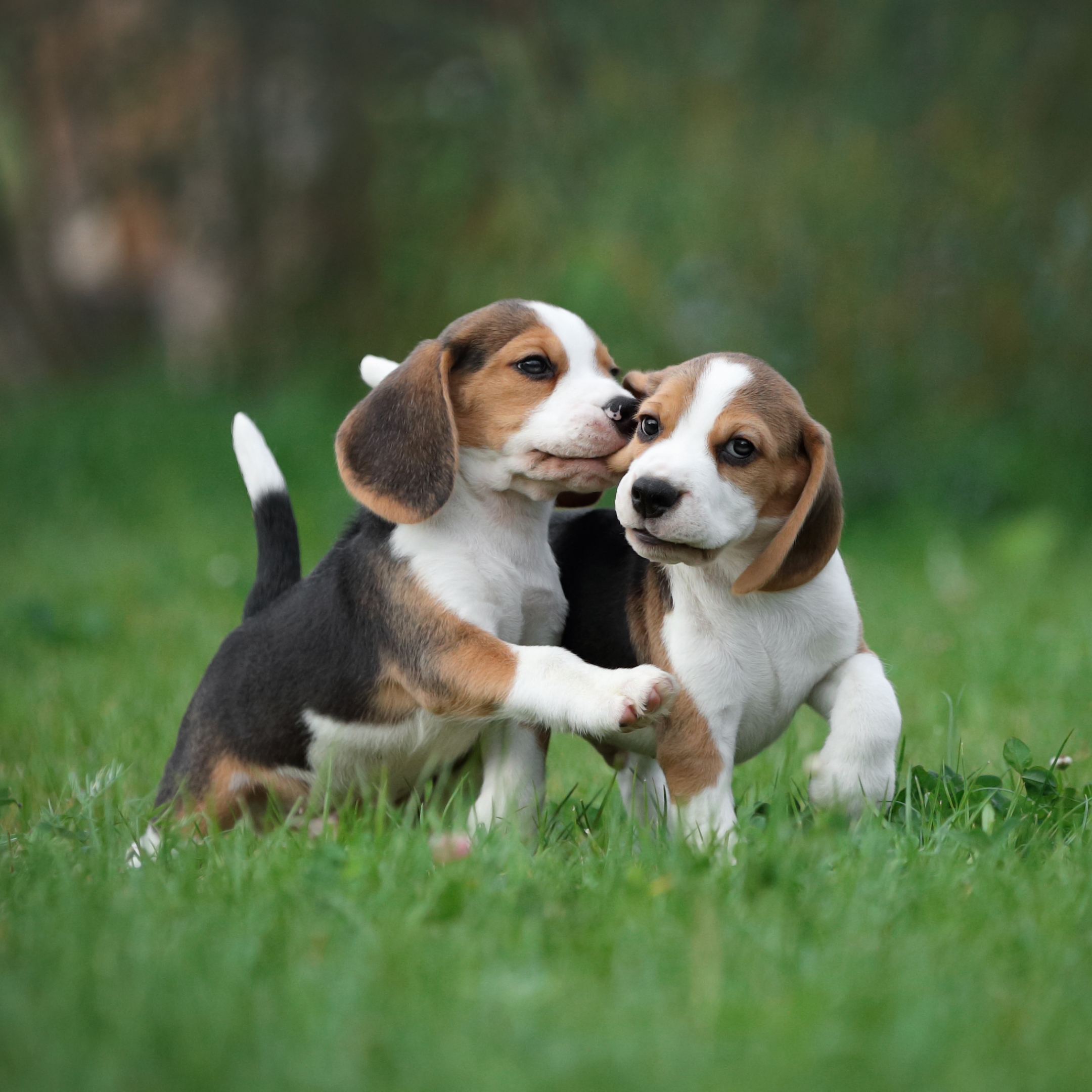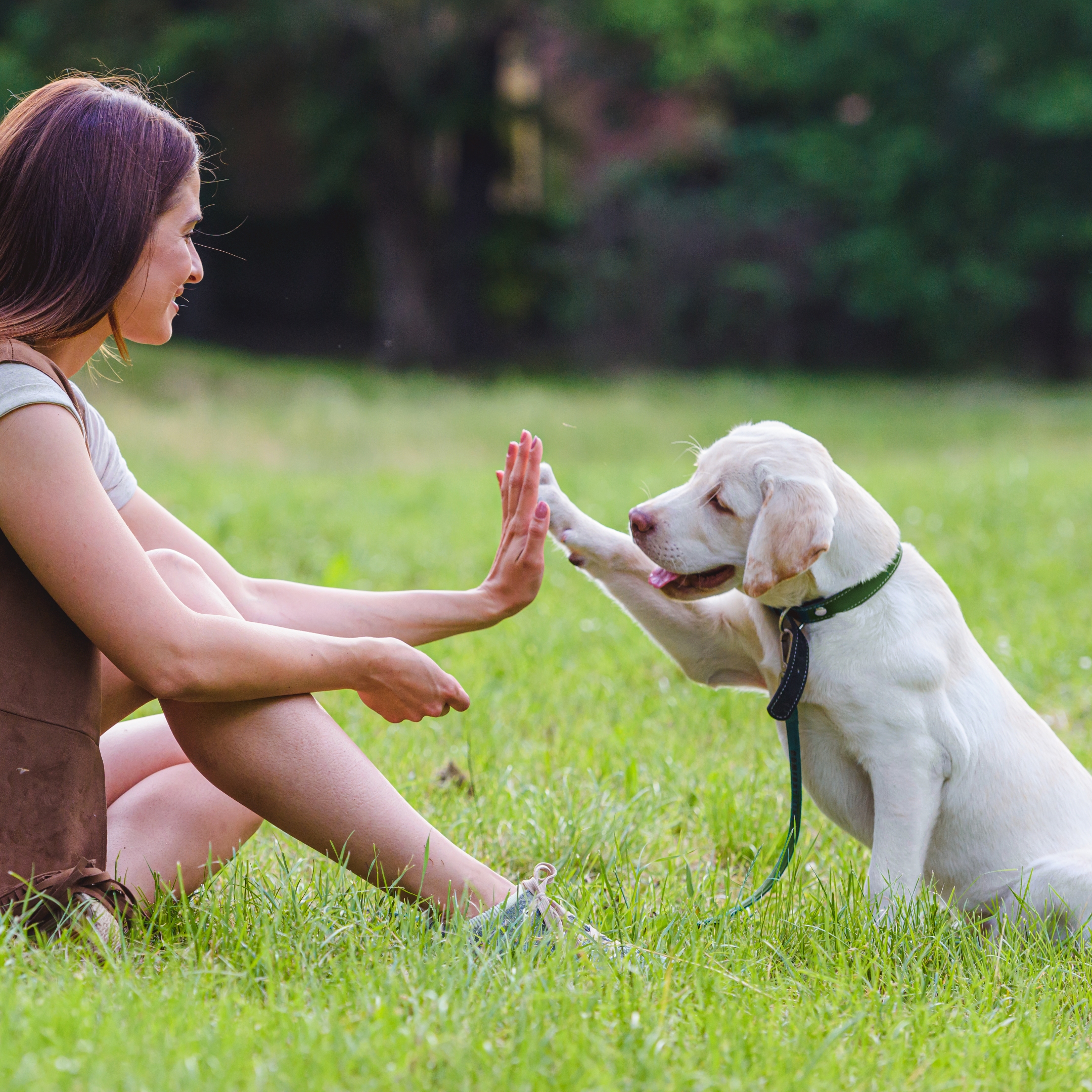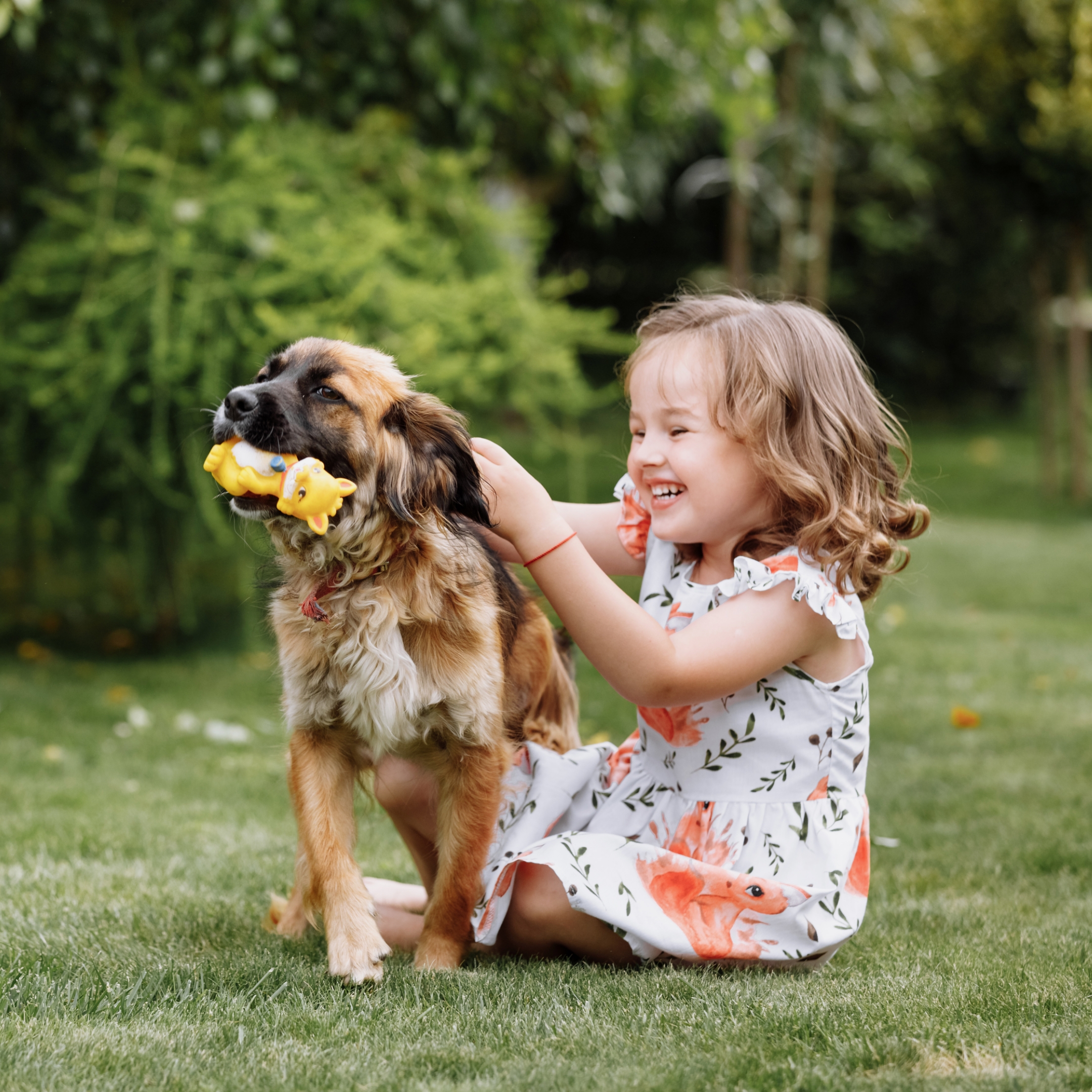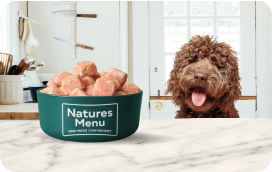HOW TO SOCIALISE A DOG AND UNDERSTAND THEIR BEHAVIOUR
Table of Contents
Introduction
What is dog socialisation and why is it important?
- Key development periods
- Socialising a reactive dog or an older dog
- How to socialise a dog around people
- How to socialise a puppy with other dogs
- Habituation to the environment
Understanding your dog’s body language and behaviour
- Tail
- Body
- Mouth
- Eyes
- Ears
- Vocal cues
- Behavioural signs
The best ways to build communication with your dog
How to socialise a reactive dog
When to contact a vet or behaviourist
What to do if dog socialisation goes wrong
Top 10 tips for dog socialisation
FAQs
- What age should my dog be socialised by?
- Is it too late to try socialising my adult dog?
- How can I begin to socialise my dog?
To sum it all up…
Introduction
Our amazing dogs are expressive, social creatures, and the better we understand them, the stronger, healthier, and happier our relationships can be. If you’ve ever wondered – how do dogs communicate with each other, and with you? – we’ve got all the answers, insights, and ideas you need.
In this blog, we’ll help you decode doggy body language by covering the basics of what they’re trying to tell you – with their tails, their ears, their barks, and their behaviour. We’ll also share our top tips for dog socialisation, looking at what to do if your dog becomes reactive.
We’ll also recommend training and activities that will help you build communication with your dog and strengthen your bond. Understanding your dog is part of the joy of caring for them, so let’s jump right in!
 What is dog socialisation and why is it important?
What is dog socialisation and why is it important?
Strictly speaking, socialisation for dogs and humans means learning to interact with others. For humans, that means learning the rules of society, while for dogs it means learning to behave around humans, the urban environment and other dogs without fear or aggression.
Dogs are pack animals, and naturally social. That’s why dog socialisation is a key part of their development, and the encounters they have in the first four months of life can go on to shape the rest of their lives- from their temperament and confidence levels, to how they relate to others and their ability to successfully navigate the world.
Key development periods
Puppies are first socialised with their mother and litter. Then, as they meet the world around them, the first important window for dog socialisation is between 3 and 12 weeks of age. This is sometimes known as the ‘first fear window’, as it’s when your pup comes home with you and starts to encounter the world, which can be very frightening to a young animal!
During this critical time, puppies can benefit from a range of positive, but carefully managed, interactions that expose them and teach them to feel safe in different situations and environments. This can give them a great foundation for developing confidence, learning appropriate social skills, and becoming adaptable.
If dogs aren't socialised enough during this time or experience a traumatic event, it can lead to anxiety, fear and even aggression later in life. That’s why it’s both important to make sure your dog is socialised but also to not push them too far, so they don’t develop any negative associations. Puppy socialisation classes can be a good first step for your newest furry family member.
However, dog socialisation doesn't begin and end during this time. Puppies often experience what’s called a ‘second fear window’ between the ages of 6 to 14 months. By this point, your dog is reaching adolescence, and may feel more confident and independent, but they’re still growing physically and emotionally. An injury or negative encounter with another dog could knock their confidence and set them back. That’s why it’s important to be aware of their sensitivities and to maintain training throughout the first two years of their lives (and beyond).
Socialising a reactive dog or an older dog
If you’ve adopted an adult dog, particularly a rescue, you might not know much about their early life and may find that they weren’t properly socialised when they were young. On top of that, every dog is different, whether it’s due to genetics, breed or life experience. Some may naturally be more outgoing, while others might be more reserved or sensitive. Understanding and working with your own dog's temperament is important.
That said, an adult dog’s behaviour definitely isn’t set in stone. While they may never be as confident as a dog adopted in puppyhood, many adult dogs can and do learn to overcome fear and reactivity, whether it’s in response to other animals or to people or the environment. However, socialising a reactive dog takes time. Training is really important in these cases, as is plenty of patience and positive reinforcement. We’ll cover this in more detail a little further on.
How to socialise a dog around people
Socialising a puppy means exposing them to people from a young age, so they’re comfortable around humans. Ideally, they should interact with a wide variety of people, of different genders, ages, ethnicities, and ability levels – even people wearing uniforms or carrying umbrellas! Make sure you carefully manage these encounters so they’re not stressful for anyone involved.
It’s important to remember that when a dog encounters someone who doesn’t fit into their sense of ‘normal’, they might not trust them at first. Your family sets the template for what they consider to be ‘normal’ and might not extend to people who are a different gender or ethnicity to you, or even tall people or those using mobility devices like a wheelchair.
By letting your puppy encounter as diverse a group as possible, you’ll be teaching them to be confident around all sorts of people. Even if your dog is too young to be vaccinated, you can carry them around when you go on errands and let them meet people. Encounters with friendly strangers, children, and people wearing hats or different types of clothing may help puppies develop into well-rounded dogs.
Dog socialisation also means setting boundaries with people. Younger children, for example, may not have learned how to properly approach a dog, or might behave in a way that’s threatening to them, like stroking them too aggressively or pulling their tail. And puppies, especially with milk teeth, have a sharp bite and may cause pain, even if they’re just playing.
In an ideal world, people should always ask before approaching or touching your dog. While this isn’t always what happens in reality, it’s important to try to manage these meetings as closely as possible, so both dogs and humans have a positive experience.
 How to socialise a puppy with other dogs
How to socialise a puppy with other dogs
When you’ve got a new puppy, it can feel intimidating or stressful to let them interact with other dogs for the first time, especially while they’re so small. But introducing puppies to other animals, especially well-mannered dogs, is crucial for teaching them proper social etiquette. It's how they learn to communicate, play, and respect boundaries. When a puppy is young, other dogs can even teach it to not bite too hard during play! Dog parks are a great place to meet other dogs, and have these experiences, but make sure your puppy is vaccinated first.
When you’re getting started, make sure your puppy is working at the level they’re capable of. That could mean starting off with puppy socialisation classes before moving on to more challenging environments, like enclosed dog parks or social dog walking groups. Always monitor these encounters closely though, learning the warning signs dogs give off to say they’ve had enough, and separating them if play becomes too rough or frantic. Use positive reinforcement like treats or praise to reward friendly behaviour, and as your puppy becomes more confident over time, you can increase the length and frequency of play sessions.
To protect your pup, never assume a dog on lead is friendly to approach and always ask before letting yours say hello. A negative experience could leave a lasting impression on your little one that could lead to fear or aggression, and is usually easily avoided with basic communication and awareness.
Meetings with other dogs are never risk-free, but most dogs naturally aren’t aggressive to puppies. Playing with their own kind is an important and enriching part of a dog’s life, and you may even find they develop dog ‘friends’ they prefer over others!
Habituation to the environment
Dog socialisation doesn’t stop at interacting with animals and people. Dogs also need to learn to cope with their environment, something that’s often called habituation. As their ears are very sensitive, you may find that door knocks, fireworks, planes overhead and other loud noises can provoke a strong reaction, especially when they're new sounds. Puppies also need to learn how to behave when travelling, around livestock, squirrels, and other distractions.
Habituation is the process of desensitising them to these triggers by exposing them repeatedly over time and rewarding calm behaviour. The good news is, you can teach a dog to be confident and to look to you for guidance when they’re unsure of something. That means they can apply their knowledge and training to a whole variety of scenarios. We’ve written about noise aversion therapy before, so this blog might be useful for further reading.
Understanding your dog’s body language and behaviour
You probably already know many of the classic signs that show that your dog is happy and relaxed. But these aren’t always as straightforward as they seem. Even tail wagging and ‘smiling’ can sometimes be a sign of anxiety – not every wag is a happy one!
It’s important to understand your dog's body language – both positive and negative – so you can act on it quickly, avoid situations escalating, and keep them feeling calm. Here’s what to look out for:
Tail
Keeping an eye on your dog’s tail is a great way of understanding how they’re feeling. A neutral tail that hangs and swings without tension is usually a good indicator they feel at ease. While a wagging tail can mean a dog is feeling happy or playful, it can also mean a variety of other things, from playfulness and joy to preparing for a fight. Watch how your dog behaves when they’re truly happy (playing with you in a safe space at home, for example), so you can get familiar with their signature wag. A dog that’s anxious or fearful will lower their tail or raise it so far under their legs that it lies along their belly.
Body
Dogs that are relaxed generally have ‘loose’ muscles with no tension. Their face looks relaxed, and they may curl up or stretch out at home. They aren’t stiffening or sitting bolt upright without moving. If they’re walking, they seem at ease and aren’t pulling on the lead or hiding or crouching near to the ground. Sometimes, a dog yanks on the lead because they’re excited to explore. However, it’s worth remembering that even happy excitement can flood a dog’s body with stress hormones and prime them to be in a less-than-calm mood.
Mouth
A doggy version of a smile is when their mouth is relaxed, which often means it’s partially open, with their tongue out. That being said, many people make the mistake of thinking any ‘smile’ is a good sign. Sometimes dogs look like they’re smiling when they’re acutely anxious, panting and trying to show non-aggression. If you think your dog might be smiling, check the context and the rest of their body language before assuming they feel happy.
Eyes
When a dog is comfortable, their eyes will be relaxed, and they will blink often. The lids might even droop, and they will look at you with a soft gaze. Dogs that are anxious or scared by something will show you the whites of their eyes or might stare fixedly at one point. Puppies often show you ‘whale’ eyes, turning their head away slightly and looking at you with the whites of their eyes visible. This is often a sign that they’re overwhelmed, either by their environment or the level of attention they’re receiving. If you’re stroking a dog and you see whale eyes, it’s good to listen to what they’re telling you. They may not be enjoying the cuddle as much as you!
Ears
Like their tails, ears say a lot about a dog’s mood. You’ll learn to tell when a dog is listening intently to something from how their ears prick up. But equally, their ears can show distress. While every breed’s ears are different, a happy dog has their ears in a neutral position. When they feel fear, they often hold their ears back or flatten them down. Dogs may also flatten their ears when they’re excited to see you – but once they calm down, they should return to a neutral position.
Vocal cues
Dogs are vocal, and will make noise to communicate, whether that’s barking at things outdoors or making pleasure growls during play. This should usually last a few moments at most. If your dog’s barking excessively, howling or whining, particularly if it’s not in response to a particular event, listen to them. They’re probably trying to tell you something isn’t right. If they're growling around other people or dogs, walk them away immediately so the situation doesn’t escalate.
Behavioural signs
There are lots of ways your dog’s body language and behaviour can show you they’re feeling distress. Keep an eye out for hiding or cowering, unusual drooling, panting, and shaking, barking, and howling, or changes in their diet or eagerness to take treats. Speak to your vet if these patterns last more than a few minutes or occur frequently. A happy dog will generally be energetic, playful, approachable, and happy to eat meals.
The best ways to build communication with your dog
Building communication with your dog is a blend of patience, consistency, and understanding. It begins with learning to read your dog's body language and cues, and understanding how they respond to different situations.
 But communication is a two-way street, so it’s important to let your dog know what to expect from you too. Establish clear boundaries and commands through positive reinforcement, using treats (like these pocket-friendly Natures Menu packs) as well as praise, toys and cuddles. The more you train and communicate with your dog, the stronger your bond will become. Negative communication, like shouting, punishing, and yanking on their lead, will only make them more anxious and teach them the world is a scary place.
But communication is a two-way street, so it’s important to let your dog know what to expect from you too. Establish clear boundaries and commands through positive reinforcement, using treats (like these pocket-friendly Natures Menu packs) as well as praise, toys and cuddles. The more you train and communicate with your dog, the stronger your bond will become. Negative communication, like shouting, punishing, and yanking on their lead, will only make them more anxious and teach them the world is a scary place.
Consistency helps your dog understand what you're asking for and builds their trust in you and their confidence in themselves. It’s always good (for both of you!) to spend quality time together, going on walks, playing, and training. Try to carve out some time to wander your favourite footpaths and fields, explore somewhere new or even head off to one of the UK’s many dog friendly holiday parks for a well-earned getaway.
How to socialise a reactive dog
If your dog has an exaggerated response to certain situations, that’s often called dog reactivity. There are different types of reactivity and they are in response to different situations.
Leash reactivity, for example, is when a dog becomes more aggressive or anxious on a lead. This could manifest as lunging and snapping at approaching dogs. Reactivity can also be in response to people, other dogs, or noise, and can mean your dog becomes extremely fearful in response to certain people or situations, barking excessively or scrabbling away to hide.
Dealing with a reactive dog can be challenging, and often happens when they haven’t been fully socialised or given enough reassurance in their early life. It might be that you’ve got a rescue dog who seems to be struggling. Whatever their history, it’s now your role as their carer to teach your dog to manage their emotions and fears better.
Generally, training involves pairing their exposure to perceived threats with something positive, like treats or play, so they learn to link triggers with a positive, rather than negative association. It’s not always easy, but it can make a huge difference to your dog's life, and yours, and a professional behaviourist can be a big help if you feel you need it.
Reactive dogs often have multiple triggers – things like noise, people, or cars – and ‘trigger stacking’ can happen when they have to deal with too many of these at once. Try to understand your dog's threshold and how much exposure they can handle before reacting. Gradually work to raise that threshold, making sure they feel safe and not overwhelmed. It's always a good idea to ask for guidance from a professional dog trainer or behaviourist who’s experienced in working with reactive dogs.
Strong communication is key when your dog’s reactive. An insecure dog can easily become overwhelmed and not respond to treats or commands, but it’s important they look to you for leadership. For that reason, teaching them a ‘watch me’ or ‘look at me’ command can be really helpful. It trains them to make eye contact with you to receive praise or a treat, and in the process helps them break out of freeze mode and refocus their attention on you.
Creating a calm, controlled environment is also vital for managing a reactive dog. Dogs need rest and plenty of sleep. If they can’t settle, they’ll become even more anxious. Try to avoid leaving them in stressful situations for a long time, and make sure they have a safe space, like a cosy den or covered crate, to retreat to at home when they need some time out. When they’re ready, dog socialisation classes may help as well.
It’s important to understand that generally, the root cause of reactivity is fear. Your dog is trying to protect itself and doesn’t necessarily want to hurt anyone. But in extreme cases, reactivity can evolve into aggression. The key to avoiding this and making sure they never physically harm another person or pet, is to address reactivity promptly, positively, and consistently. Never put your dog in a situation where they feel cornered or under attack.
When to contact a vet or behaviourist
Dogs, like humans, engage in many modes of behaviours that help them feel safe. Sometimes these aren’t particularly desirable and can range from annoying (like barking and pulling on the lead) to risky (running into the road, growling, and snapping at others). While a dog can be trained to behave differently, this may take time and patience. That’s why it’s important that you’re always in control of your dog, no matter what the environment. If they’re presenting a risk to themselves or others, remove them from the situation immediately.
If your dog’s showing signs of aggression, it’s also important to talk to your vet. They can rule out pain as a cause and recommend a suitable behaviourist.
What to do if dog socialisation goes wrong
Try as we might, we can’t control everything in our dog’s life. Unfortunately, too many people assume it’s safe to approach a dog without asking first, or let their children interact with dogs without proper supervision. Equally, some dog owners assume their dog can run up to any other dog on a lead – which can be a recipe for disaster! Often, owners use a red lead to indicate a dog is reactive, but a general rule of thumb is to always ask, and never assume.
While you're puppy training, to make sure their positive interactions outweigh their negative ones, it’s important to set boundaries. You’re perfectly within your rights to ask people to leave your dog alone if they’re getting overwhelmed, and it’s ok to break up play with another dog if you feel it’s too rough. Risking upsetting someone for five minutes is far better than allowing an upsetting interaction to have a lifelong effect on your dog.
Top 10 tips for dog socialisation
- Start early: Begin dog socialisation as soon as you can, ideally when your puppy’s 3 weeks old and keep it going for at least another year. Training is a lifelong practice.
- Provide positive experiences: Make sure all social interactions are positive, rewarding, and gentle. Don’t let people approach your dog without supervision and manage interactions with other dogs carefully. Use treats, toys, and praise to reinforce good behaviour.
- Habituate them gradually: Introduce your dog to new noises, environments, and scenarios slowly, starting with calm and controlled environments before moving on to busier settings.
- Choose a wide variety of situations: So your dog can become adaptable and confident, try to make sure they encounter a cross-section of what life has in store for them: enclosed dog parks, streets, cars, your house, other people’s houses and cafes. Always move at their pace and don’t force them too far out of their comfort zone.
- Make sure they meet lots of people: Think outside your immediate family! Encourage positive encounters with people of different ages, genders, ethnicities, and ability levels. Remember they need to get used to different clothing styles, like hats and uniforms too. Social dog walking groups are a great way to meet a cross-section of people.
- Let them interact with other dogs: If you’re wondering how to socialise a puppy with other dogs, try to arrange playdates with well-behaved, vaccinated dogs, and let them say hello to friendly dogs. Eventually, you can try taking them to enclosed, unleashed dog parks. Always ask before approaching a strange dog, and step in if playtime gets too rough or if either dog has had enough. If your dog is aggressive or fearful of other dogs, don’t force them to interact as this puts them, you, and others at risk.
- Ongoing training: Regular training helps socialisation as it teaches your dog confidence, and to look to you for cues on how to behave. Make sure to train at home as well as in outdoor and busy settings, so your dog always responds to your commands.
- Be calm and use positive reinforcement: Dogs can pick up on your stress levels, so try to remain calm and confident when doing dog socialisation and set boundaries for yourself too. After all, you’re learning at the same time as them! Remember, positive reinforcement is the best way to train your dog, as punishment only raises their fear and anxiety levels.
- Stay consistent: It’s important to be consistent with your dog, so they expect to encounter new situations on a regular basis. Always let them know what to expect from you and reward them consistently, with treats you know they’ll enjoy.
- Observe: While we’ve given you the basics of dog body language, each dog is different. Pay close attention to yours, so you know how they react when they’re happy, apprehensive, or fearful. If they start to show signs of discomfort or stress, provide reassurance, and don’t push them too far.
FAQs
What age should my dog be socialised by?
Puppies are great at learning new skills and taking on challenges, so between the ages of 3 and 12 weeks is a great time to begin socialising your dog. That said, puppies will easily pick up socialisation naturally as they grow, so don’t put too much pressure on having set socialisation windows if that’s not possible for you to do – just getting outside with your pup will be a great start.
Is it too late to try socialising my adult dog?
Whilst it’s beneficial to begin your dog’s training as a puppy where they have naturally occuring socialisation windows, socialisation skills can be built upon at any age, even for senior dogs! Work at your dog’s pace and don’t be afraid to contact a certified professional to get bespoke guidance for you dog.
How can I begin to socialise my dog?
Whether your dog is confident at socialising or it’s a new skill you’re developing, getting outside on walks is a great way to expose your dog to new people and environments. As well as passing other dogs and owners on walks, getting outside with your dog is a great way to strengthen your own bond as owner and pup.
To sum it all up…
Learning to understand your dog is one of the best parts of your relationship with them. It begins with knowledge of how dogs develop and become socialised and continues with observation of their body language and behavioural cues.
Don’t forget that communication is a two-way street. As pet parents, we need to be aware of what our furry family members are telling us and respond accordingly. They look to us for guidance and reassurance, so training and bonding is really important for setting them on the right path to an enriching, fulfilled life.








 What is dog socialisation and why is it important?
What is dog socialisation and why is it important? How to socialise a puppy with other dogs
How to socialise a puppy with other dogs But communication is a two-way street, so it’s important to let your dog know what to expect from you too. Establish clear boundaries and commands through positive reinforcement, using treats (like these
But communication is a two-way street, so it’s important to let your dog know what to expect from you too. Establish clear boundaries and commands through positive reinforcement, using treats (like these